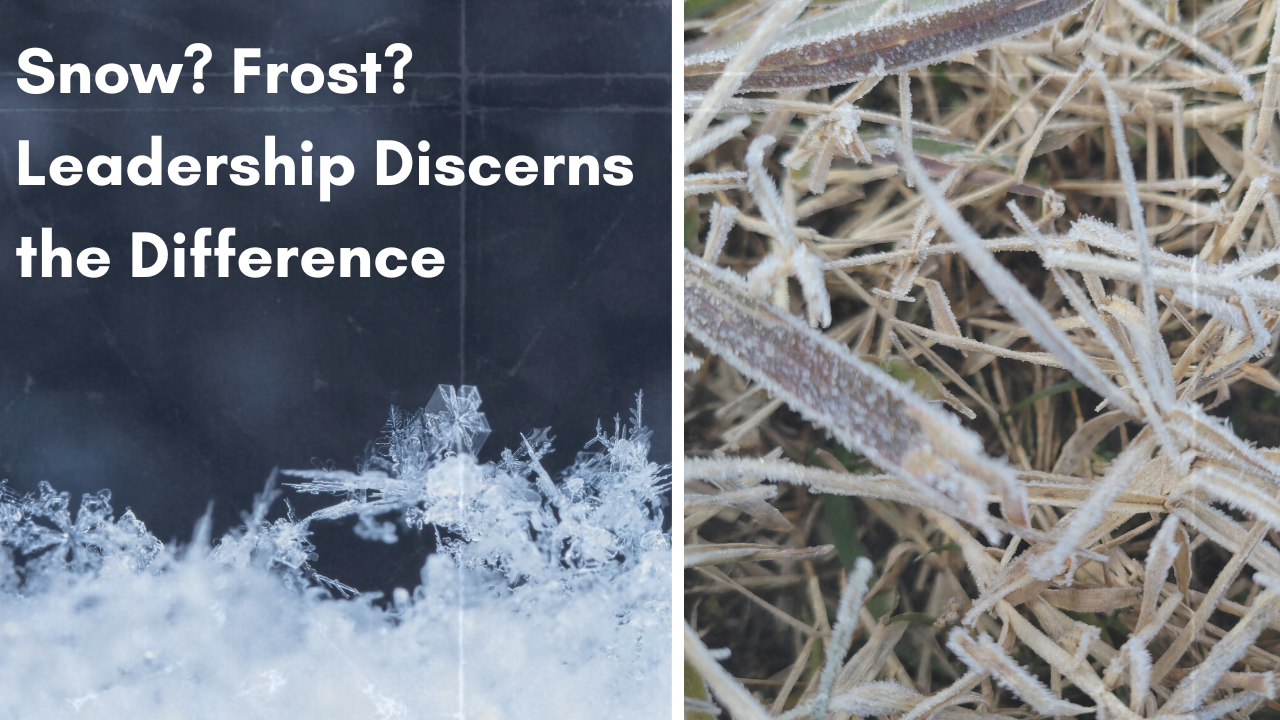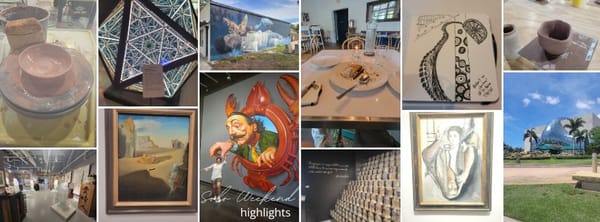Frost & Thyme: Growing Intentional Leadership

This morning, we woke up to a ground frosted white. My child, peering outside, remarked that if he hadn’t seen snow before, he might have thought it was snow. His observation lingered with me, a quiet reminder of how easily we can mistake one thing for another when we rely solely on appearances. What if mistaking frost for snow is the same as misjudging a challenge? As leaders, assumptions can mislead us, but clarity can transform everything.
Later in the day, I was in the kitchen cooking and asked my son to help me prepare some thyme. The bunch I had was dried up, its leaves brittle and ready to fall away. My son found this task much easier than dealing with fresh thyme. “This is simple,” he said as he gently stripped the leaves. His comment struck me—what had seemed inconvenient (the thyme drying out) turned out to be a blessing, simplifying a process that would otherwise require more effort.
As I reflected on these moments, they reminded me of a time when a team leader, newly tasked with an unfamiliar initiative, reached out to me. She’d been encouraged by a senior executive to brainstorm strategies for a high-stakes project that had significant implications for the team’s visibility and future opportunities. Lacking prior experience, she felt overwhelmed and uncertain about where to begin. Her situation, much like the frost and the thyme, required clarity and a thoughtful approach to reveal its true potential.
Seeing Beyond the Frost
When the team leader came to me, it became clear that we needed to pivot her approach to set her up for success. I started by asking questions to uncover the core of the challenge: What is the purpose behind the project? When are the outcomes expected? What resources are needed and currently available? These questions helped us move past surface assumptions to understand the true nature of the needs behind the project. This allowed us to strip away unnecessary complexity and focus on what truly mattered.
This process was akin to mistaking frost for snow. The team leader's inexperience made her want snow—a polished and elaborate plan—but what we truly needed was frost: a starting point to uncover clarity and move forward intentionally. Often, challenges that appear daunting at first glance become manageable when we take the time to dig deeper and assess their true nature. By reframing, we identified a clearer path forward, with simplicity and focus to what matters most.
Transformation of Thyme
As we drilled down into the initiative, I coached her on how to approach the conversation with the senior executive. Much like my son’s realization about the dried thyme, we focused on what would make the process easier and more effective. By breaking the initiative into smaller, more manageable parts, and identifying quick wins, we reduced the complexity and created a clear, actionable path forward. Together, we identified the essential elements of the initiative, prioritized them, and crafted a clear, intentional strategy.
Her preparation paid off. She approached the senior executive with thoughtful points, a concise plan, and a clear sense of purpose. The senior executive responded with praise, noting her clarity and the well-defined strategy she brought to the table. When leaders simplify complexity and foster clarity, teams become more aligned, and results follow more naturally. The senior executive was impressed not only by her strategy but by the intentionality behind it—a testament to her willingness to learn and pivot. What initially seemed like a daunting task transformed into a powerful growth opportunity.
Practical Wisdom from Frost and Thyme
These moments—whether observing frost, working with thyme, or coaching someone —highlight valuable leadership lessons:
1. See Beyond the Frost
Don’t let surface appearances mislead you. Take time to assess situations clearly before making assumptions. What may seem overwhelming at first glance often reveals opportunities for clarity and focus.
2. Recognize the Season
Challenges evolve with time, much like thyme becoming easier to handle as it dries. Patience and the right approach can simplify what once felt insurmountable. For example, I once led a cross-functional team grappling with a complex product launch. By pausing to assess priorities and asking key questions, we simplified the plan into manageable phases—allowing the team to regain focus and deliver exceptional results. Leaders who adapt to the seasons of their team and work create space for sustainable progress.
3. Coach with Clarity
Empowering others is at the heart of leadership. By asking thoughtful questions, simplifying complexity, and guiding others with intention, you can help your team achieve success and grow in the process. Start by asking open-ended questions to uncover the root of the challenge before jumping into solutions.
Closing Reflection: Leadership as Cultivation
Leadership is much like cultivating a garden. Frost, at first glance, may be mistaken for snow—especially by someone unfamiliar with it. Similarly, initial assumptions about challenges can mislead us if we don’t take the time to truly understand what lies beneath. It’s in recognizing the difference that we find the clarity needed to move forward intentionally. But frost holds its own quiet purpose, urging us to pause and see things as they truly are. It’s not about the illusion of perfection but about uncovering clarity and creating a foundation for intentional growth.
Dried thyme, though seemingly brittle, teaches us the value of transformation. Its concentrated flavor and ease of use remind us that challenges, when approached thoughtfully, can become opportunities for efficiency and progress. Both frost and thyme show us that clarity, intention, and adaptability are essential to nurturing success. For senior executives, these lessons aren’t just about individual growth—they’re about creating a culture of clarity and intention across teams, ensuring alignment and focus at every level.
So the next time a challenge arises—whether it’s frost-covered ground, brittle thyme, or an uncertain initiative—pause and ask yourself: What am I seeing? What am I missing? How can I bring clarity and intention to this moment?
